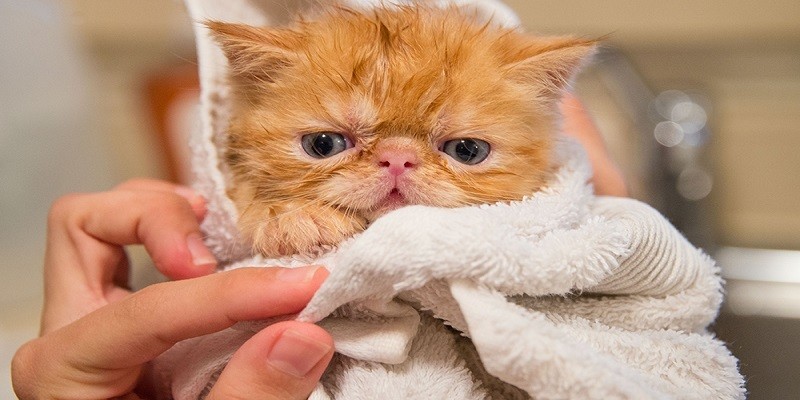Unlike dogs, cats have so-called ‘self-cleaning’ mechanisms, meaning that they take care of the grooming as best as possible. They’re so well-known for doing this that, whenever you see that a cat has lost interest in self-grooming, you know that something’s very wrong.
While most cats don’t even need to be bathed, there are some situations that call for this potentially traumatizing event.
Sometimes bathing is necessary for longer-haired breeds, or if your cat goes outdoors and gets particularly dirty. Sure, it’s easier to use a waterless shampoo for cats in such a situation, but sometimes such products might not be able to raise up to par.
Here are some tips for bathing your cat.
Shallow Basin Or Sink
If you have tried to bathe a cat in a bathtub before, you probably know how challenging it can be. Cats don’t really like the feeling of now knowing what’s going on around them, and keeping them in a tub isolates them for a while.
Besides, washing your cat’s coat in a bathtub can be tedious or uncomfortable for you, too. Bathe your feline friend in a shallow sink or a bucket.
Fill the sink or the basin with lukewarm water, but before you do that, make sure that the bottom of the container is non-skid. Otherwise, your cat is going to try to escape and will keep slipping and might even potentially put her health in danger.
Clip Her Claws Before The Bath
We all know that cats are equipped with tiny little daggers called claws. If you don’t want to get hurt and you don’t know how your cat is going to react to you, giving her a bath, you should use a nail clipper before the whole procedure.
If you believe that your cat is bound to get scared or a little aggressive, use a pair of protective gloves. We don’t recommend using a pair of those that are utilized for cleaning your dishes. Try to stick for utility gloves, instead.
Use A Pitcher
Dipping your cat’s whole body into water is a bad idea. Water can get into lots of places, and if it contains cleaning solutions like shampoo, it can be dangerous. Always avoid getting water into your cat’s ears as she can develop an ear infection with ease.
Keep your cat in the water superficially and use a pitcher or a cup to pour water over her back and tail. Avoid pouring any on her head and try not to splash water around her head as it might get her upset. For this area, you can use a washcloth.
For the ears, you can rely on moist cotton balls, which can also be used for wiping her eyes. The cotton balls shouldn’t have come in contact with any cleaning solution. Never stick any ear swabs into your cat’s ear as you can effectively damage the ear canal.
Use Cat-Safe Shampoo
Using cat shampoo instead of human or even baby shampoo is paramount as a cat’s skin is different compared to that of a human. If you don’t have any on hand, you can use baby shampoo as it is far less dangerous compared to brands marketed for adults.
But cat shampoo is the safest, especially if it has hypoallergenic ingredients such as aloe vera or oatmeal and contains no toxic ingredients or fragrances.
Keep A Towel At Hand
When a cat is wet, she tends to lose body heat very quickly. Keep a towel close by to make sure that you cuddle your feline buddy and get her as dry as possible. Some cats can tolerate receiving a good rub, and others can even put up with the noise from a blow dryer.
Ideally, you should bathe your cat in the warm season so that she can maintain her body temperature without too much hassle.
DON’T MISS
- Top 5 Best Cat Flea Treatments
- Benadryl Dosage for Cats | Can You Give It For Allergies, Itching, Or Sedation?
- Everything You Need to Know About What It Takes to Wash a Dog
Last Updated on January 14, 2025 by Pauline G. Carter

